Latin name: Hypoestes
Category: shrubs, perennial herbaceous plants
Birthplace: Africa, Madagascar
Hypoestes - a charming spotted miracle of nature
Hypoestes is a genus that unites about one hundred and fifty species of amazing, unusually beautiful, heat-loving evergreen tropical plants that settled in the Acanthus family. The interesting name of the genus hypoestes comes from the Greek words hypo - "under", estia - "house". It is directly related to the structure of the flower, the calyx of which is covered with a bract. In the English interpretation, the name of the flower sounds like "a plant with peas."
The handsome hypoestes is a native of the tropics. These perennials grow in herbaceous, shrubby and semi-shrub forms in the humid forests of South Africa and Madagascar.
The hypoesthesia flower is very popular with home plant growers for the extraordinary beauty of bright leaves and ease of cultivation. If we consider hypoesthesia signs and superstitions, then it can not only decorate the interior, both office and living space, but also set the people present in a creative working mood, cheer up, reveal in a person the ability and desire to speak beautifully, present new artistic ideas and bring this beauty to life. Sometimes amateur flower growers plant several varieties in one flowerpot and admire the charming appearance of this miracle, they call it the hypoestes mix.
Beautiful flower arrangements delight the eye in combination with hypoesthesia, azalea, ficus, dracaena. Bring your florarium to life with this amazing Tropican. Its specific microclimate will be comfortable for the duet of hypoestes and Fittonia and irresistible beauty for the eyes of others.
The height of a beautiful bush can reach sixty centimeters. To give the plant a more decorative appearance, it is periodically necessary to pinch the tips of the upright, fleshy stems, which become bare and lignified with age. The main part of the stem is covered with bright, variegated seven to ten centimeters long oval-shaped leaves with sharp ends and wavy edges. The variety of colors is overwhelming. The dark green, gray or green base of the leaf plates is painted with many tiny specks and specks of red, pinkish or white color. A beautiful dieffenbachia can compete in spotting with hypoesthesia.
How the hypoestes blooms can be contemplated with the onset of the summer period and until the December frosts. Lilac flowers, collected in paniculate inflorescences, are piled on top of the bush. But hypoesthesia does not attract flowering with its special beauty and decorativeness, sometimes panicles that have appeared are simply removed before flowering with a small part of the stem. After all, the consequence of flowering can be elongated stems of hypoesthesia, smallish leaves and many shoots from scattered seeds. But all these questions are decided personally by the owner of a wonderful houseplant.
You can perfectly admire the amazing beauty of hypoesthesia in open ground conditions. To do this, you need to prepare seedlings in greenhouse conditions by sowing seeds and getting wonderful spotted beauties. With the onset of summer, these chic annual seedlings are transplanted into a garden in a flower bed.
We exclude frosts. Cold nights will lead to the death of the plant.
Colorful charming hypoesthesia rugs will delight the entire warm period with regular maintenance of the desired height by systematically trimming the tops. Hanging baskets with hypoesthesia look very attractive.
Close relatives of this amazing tropical guest are Aphelandra, Beloperone, Whitefeldia, Jacobinia.
Hypoestes photo you can see it and admire the beauty of the plant in the next section of the article.
Hypoestes types and varieties
Hypoestes phyllostachya
Hypoestes leaf-grate photo - leaf-spiky hypestesThe forests of the tropical part of Madagascar are native to this variety of hypoestes, an evergreen perennial. This is a charming densely leafy bush. Its soft purple-red simple leaves are painted with whitish, pinkish, green or red dots in large quantities. For this beauty, the plant was nicknamed the "freckled face." The reverse side of the sheet plates is white.
Small flowers with petals of lilac, pink, purple, lavender shades appear from the axils of the leaves and organize paniculate inflorescences.
Hypoestes blood red (Hypoestes sanguinolenta)
Hypoestes blood-red This small herbaceous, brightly colored, decorative leafy flower, which has upright and branched pagons, can be considered the most common variety. They are decorated with dark green ovoid, wavy leaf plates with clear purple streaks and strewn with red specks. The size of the leaves reaches eight centimeters in length and four centimeters in width. Hypoesthesia blooms red with small light purple flowers. These amazing evergreen shrubs are from the island of Madagascar, where they grow up to one and a half meters in height.
Thanks to the work of breeders, a huge number of varieties of hypestes have appeared. Very original, beautiful and unique white hypoesthesia proved to be.
Hypoestes Confetti white
Hypoestes "White Confetti" photo - freckled face plant A very interesting variety that attracts amateur flower growers with dark green leafy plates covered with delicate numerous white spots.
Hypoestes spinous (Hypoestes aristata)
Flowerpot Hypoestes spinous photo - hypestes A luxuriantly flowering garden variety of the beautiful hypestes is popular with flower lovers. Wonderful bushes can reach a meter height with a wide crown of up to sixty centimeters. Lanceolate or ovoid, juicy and thin, slightly pubescent leaves from three to thirteen centimeters long, up to nine centimeters wide, are green. A charming bush is made by delicate flowers of a pink or purple hue.
The most interesting varieties:
Hypoestes spinous blue (Hypoestes aristata blue)
Hypoestes spinous blue photo - Vaterra The original variety pleases with bluish-lilac flowers.
Hypoestes spinous white (Hypoestes aristata white)
Hypoestes spinous white photo - Vater Pure white flowers of this variety look very attractive.
Hypoesthesia care at home
Caring for a unique handsome guest from the tropics will not create big problems. The main thing for a hardy, picky and fast-growing flower is that this care is performed regularly and consistently. High-quality watering, sufficient access to light and a systematic examination of the plant will allow you to have an elegant miracle with colorful and expressive patterns on the leaves, which will decorate the interior, both residential and office space.
Choice of location and temperature
Hypoestes is a lover of bright light, but prolonged exposure to direct sunlight is not allowed so as not to harm the leaves. The most convenient and pleasant location for the plant will be the southeast or southwest window sills. To maintain the variegated saturated color of the leaves in winter, it is advisable to extend the daylight hours to ten hours with the help of fitolamps. In the warm off-season, your motley peas will be happy to spend in the fresh air.
Comfortable temperature indicators for hypoesthesia are considered in summer up to 25˚С, with a smooth transition to winter not lower than 15˚С. The most optimal temperature values \u200b\u200bare 17-18˚С.
Protect your variegated peas from drafts.
Humidity and watering
Humidity for a tropical messenger of exotic flora should be high or moderate. This can be achieved by regular daily spraying of hypestes, or by pampering your pet with a warm shower, which is also useful from a hygiene point of view. An additional measure to increase humidity will be to install the plant in a saucer with constantly moisturizing pebbles or expanded clay. You can buy flower pots with automatic watering.
It is necessary to water the freckled face abundantly, but not excessively, it is advisable to filter or boil the water. Approximate watering regime: with an interval of two days in winter, in the rest of the period - every day, but the main indicator is a slightly dried top layer of the earth.
We dry the soil - the leaves fall, excessive watering - the roots rot, the flower dies.
Soil and its top dressing
Perfectly adopted in a light drained earth mixture, taken in equal proportions: deciduous soil, garden soil, coarse sand or perlite, peat. You can buy a ready-made soil mixture, which is intended for variegated indoor flowers.
Good drainage is a must.
For monthly top dressing, it is advisable to take a liquid fertilizer, dilute it in half. When choosing top dressing, it is necessary to pay attention to the minimum content of nitrogenous compounds, which adversely affect the bright color of leaf plates. It is better to use combined universal mixtures that are intended for deciduous crops, with a large amount of potassium to maintain the brightness of the leaf plates.
Hypoesthesia transplant
An annual spring transplant into fresh, loose, slightly acidic, fertile soil will only benefit the motley peas. A pot with a hole should be low and wide.
We cover the bottom of the flowerpot with a good layer of drainage. Transplanting our freckled face, we free its roots from the old earthen mixture. When planting, do not press the soil too tightly, leave room for air to penetrate to the roots. The decorativeness of the bush will improve if you pinch the tops of the stems.
To form a lush crown, a houseplant must be slightly cut.
Bloom
Hypoesthesia flowers do not have special beauty. As a result of flowering, the leaves of the plant become small, the stems are elongated and the indoor handsome man becomes unattractive. Therefore, when a flower arrow appears, it is better to remove it.
Hypoesthesia reproduction
It is not at all difficult to get a young houseplant from cuttings or seeds, if available.
Seeds are sown in a mini-greenhouse with the onset of spring. It is desirable to maintain a constant temperature regime within 15-18˚С. After four months, young seedlings will be ready, which can be transplanted to a permanent location.
The easiest way to get a new wonderful houseplant is from cuttings with three nodes. Perfectly rooted cuttings in a peat-sand mixture in a mini-greenhouse, or in an aqueous solution in the presence of charcoal. Acceptable temperature for rooting is 25˚С. After the roots appear, we plant a young hypoestes in an inpidual pot and pinch the top to form a beautiful crown.
Hypoestos pests and diseases
In case of violation of the conditions of detention, indoor hypestes is most often affected by scale insects, spider mites, and thrips. Having found uninvited guests, we immediately apply insecticides. You can use Aktellik or Karbofos.
Problems that may arise
- Foliage turns yellow and wilts - excessive watering.
- The leaf plates become wrinkled, and their edges dry out - the air in the room is excessively dry.
- The leaves lose their brightness, acquire a lighter shade - insufficient lighting, an overdose of fertilizers with a high level of nitrogen.
- The hypoestes has undergone leaf fall - it is too cold in the room, or the temperature readings are jumping; perhaps a houseplant came under the influence of a draft; soil mixture is too dry.
- Brown spots appeared on the leaves - the flower fell under the direct rays of the sun, the result is a burn of the leaf plates.
With the qualitative fulfillment of growing conditions, a beautiful motley African will improve the interior and will delight others, both in splendid isolation and in company with plants that have an even monochromatic coloring of the leaves. Such representatives can be zamiokulkas, spathiphyllum, peperomia, pandanus. Each grower decides this interesting question for himself inpidually.














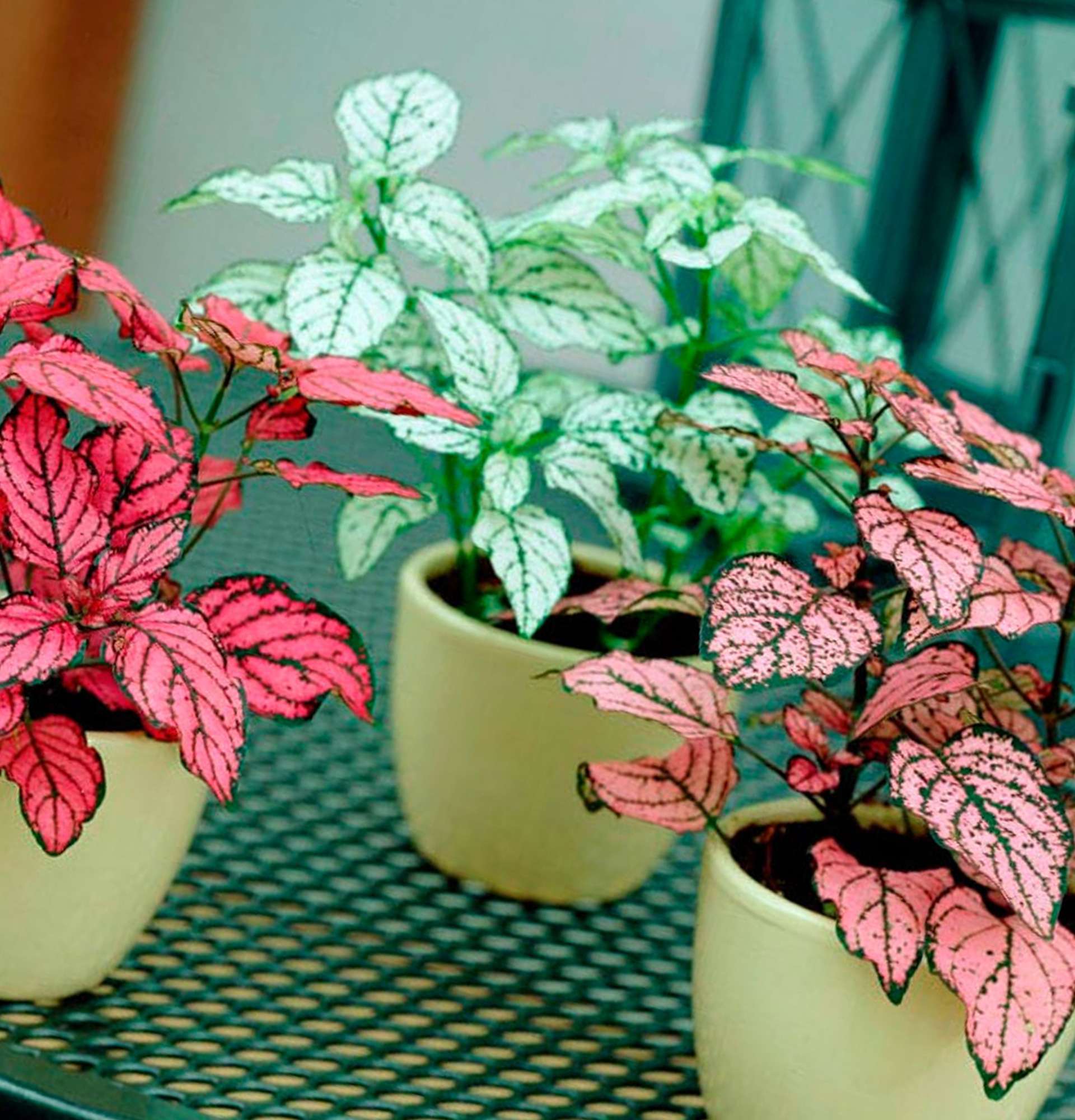
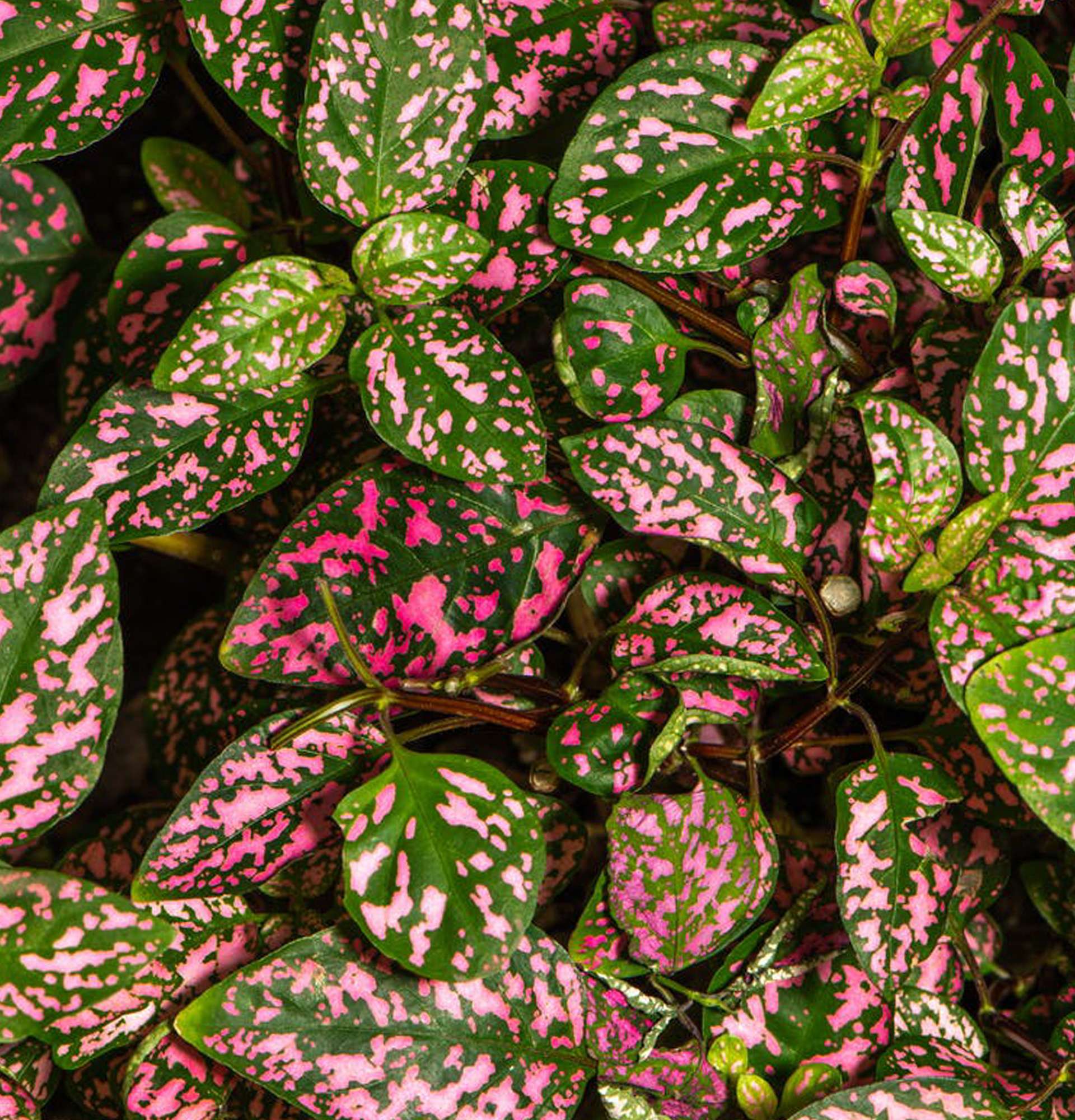
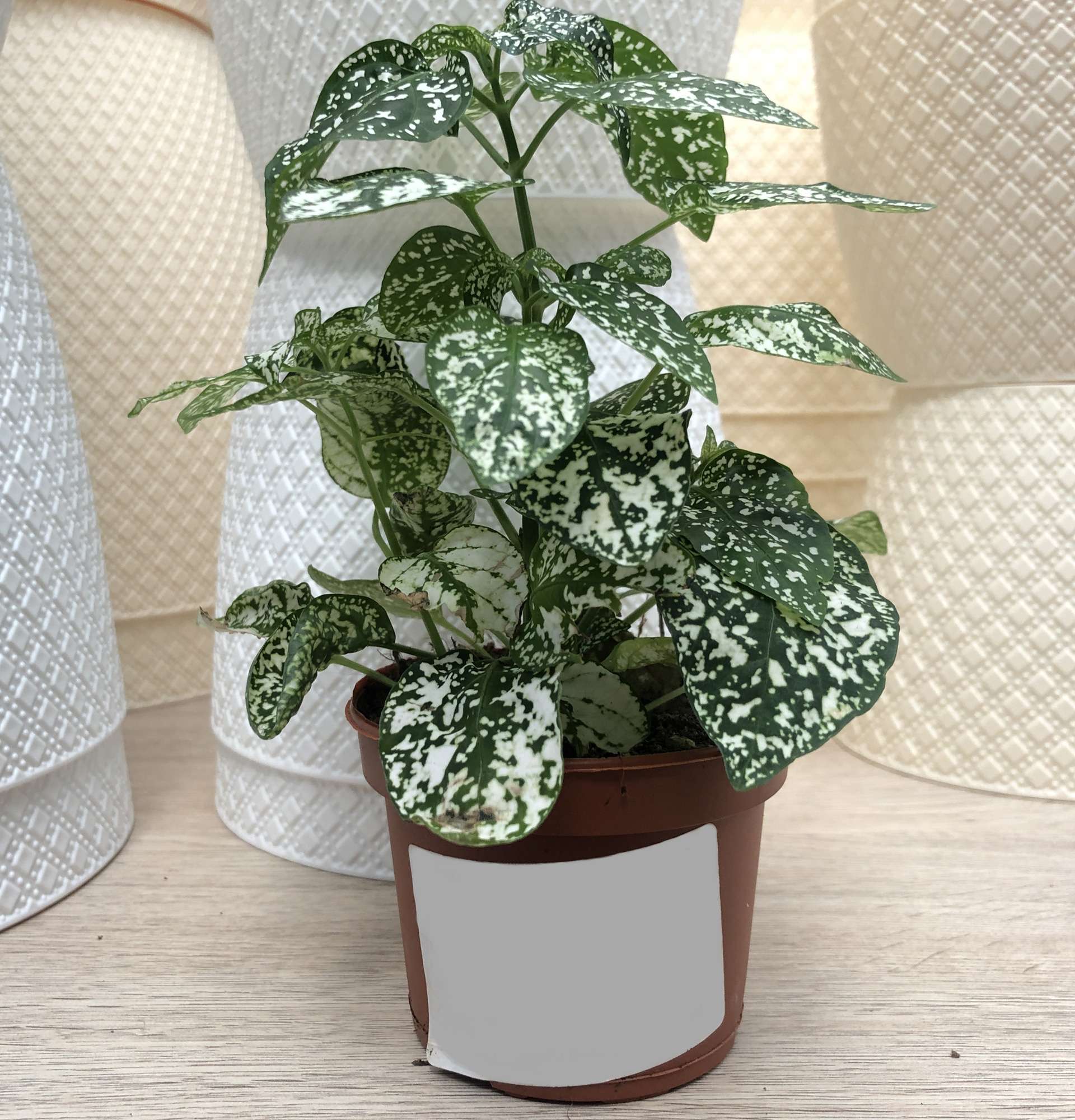
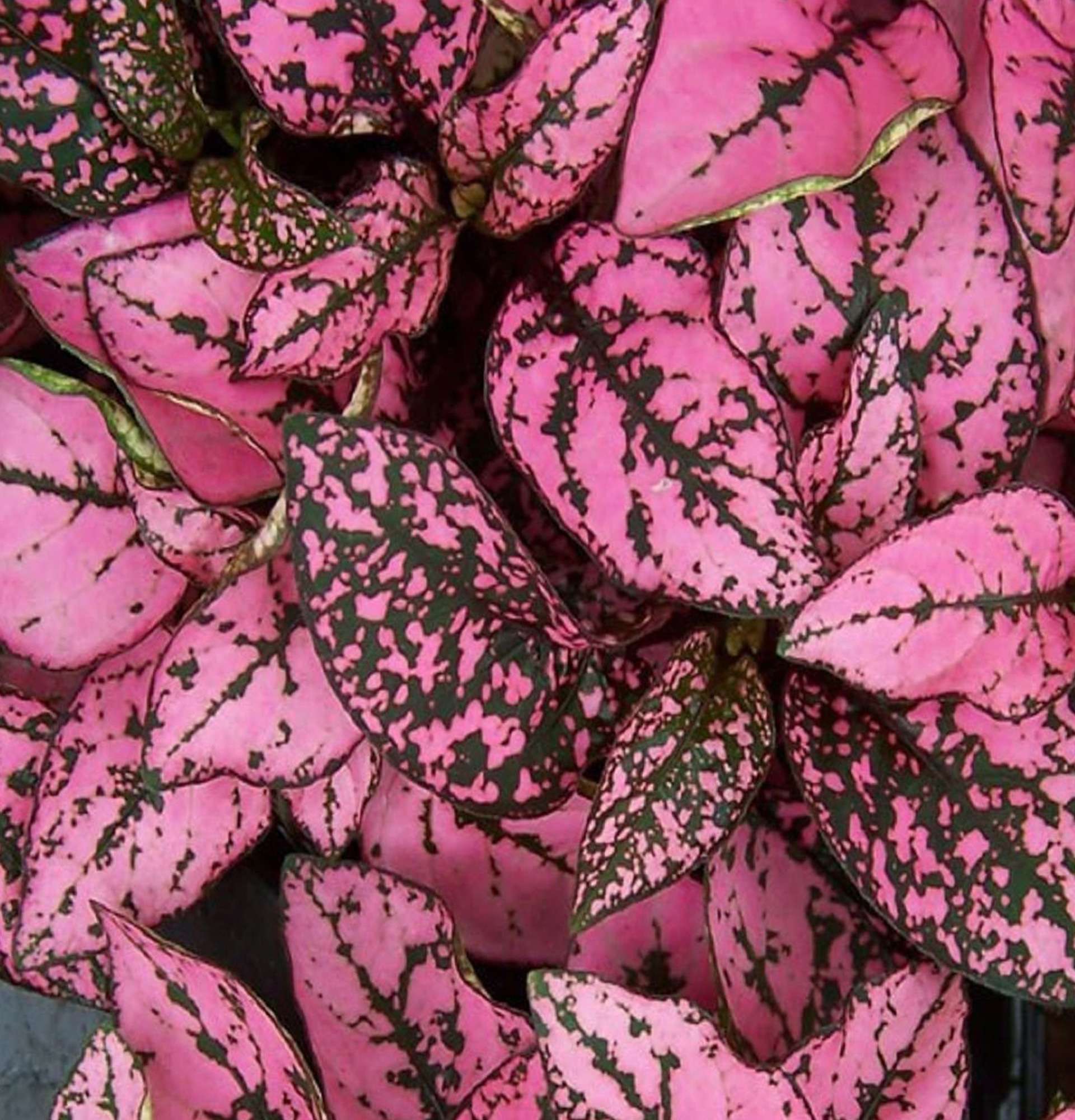
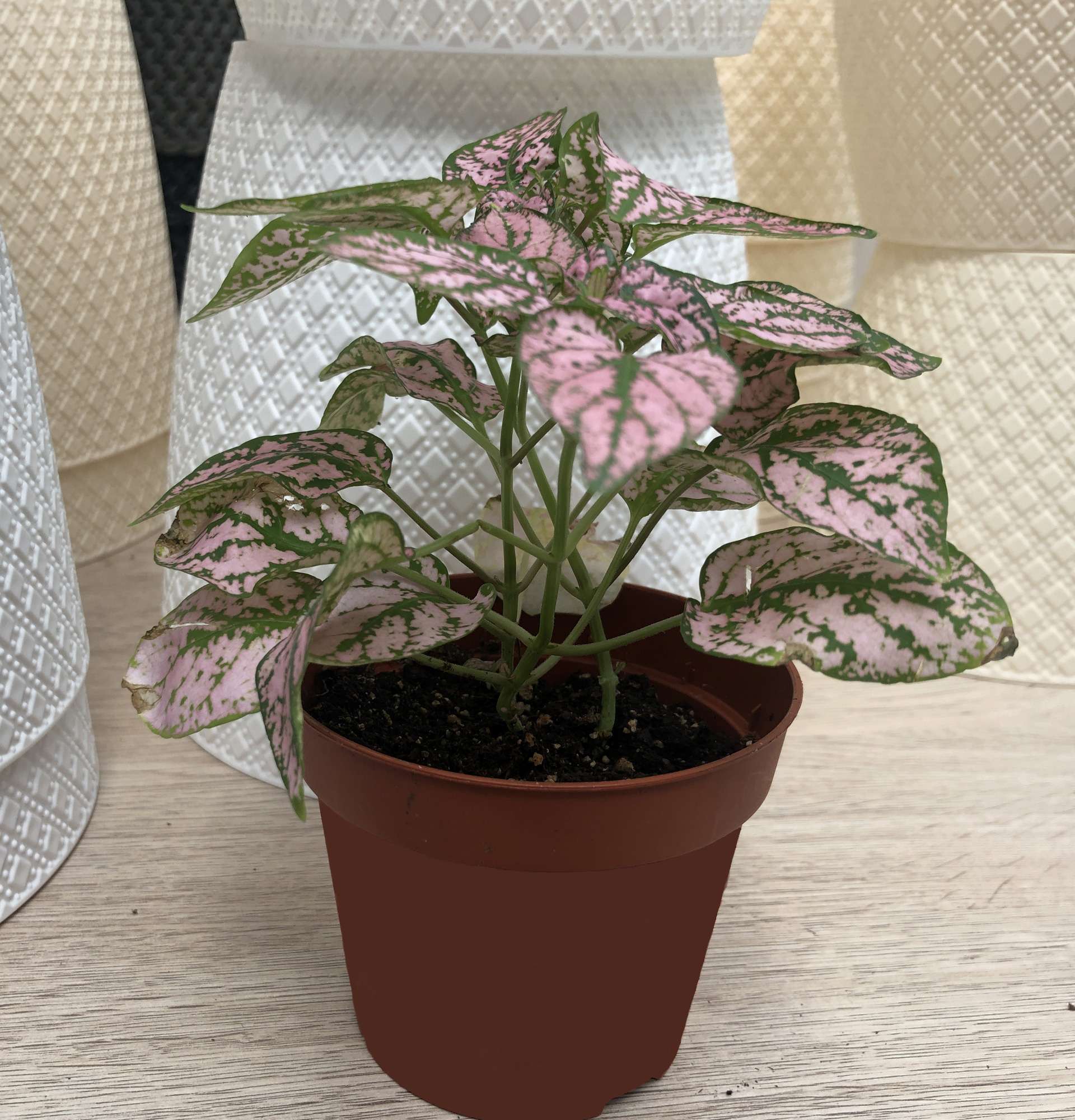
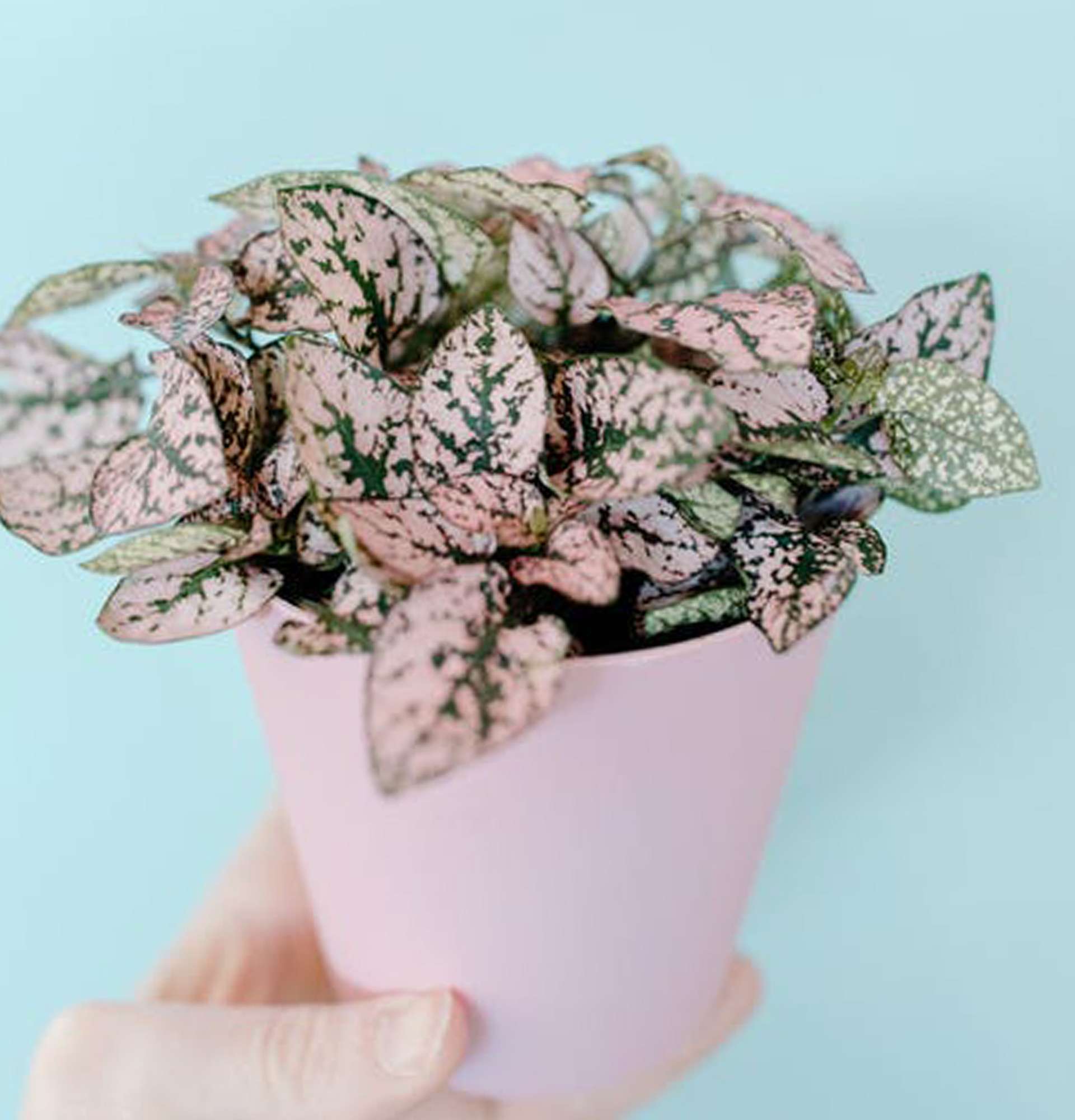
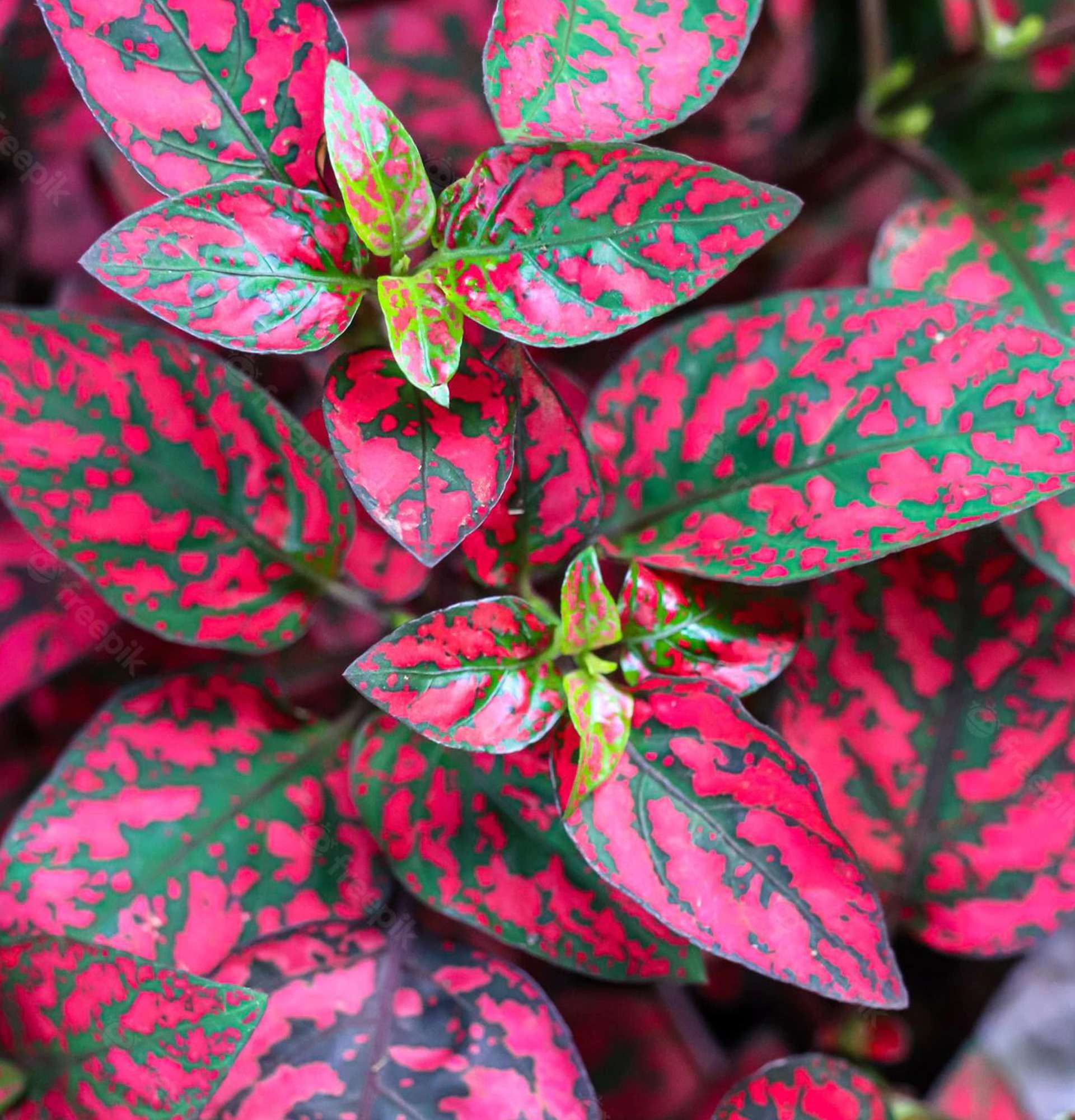
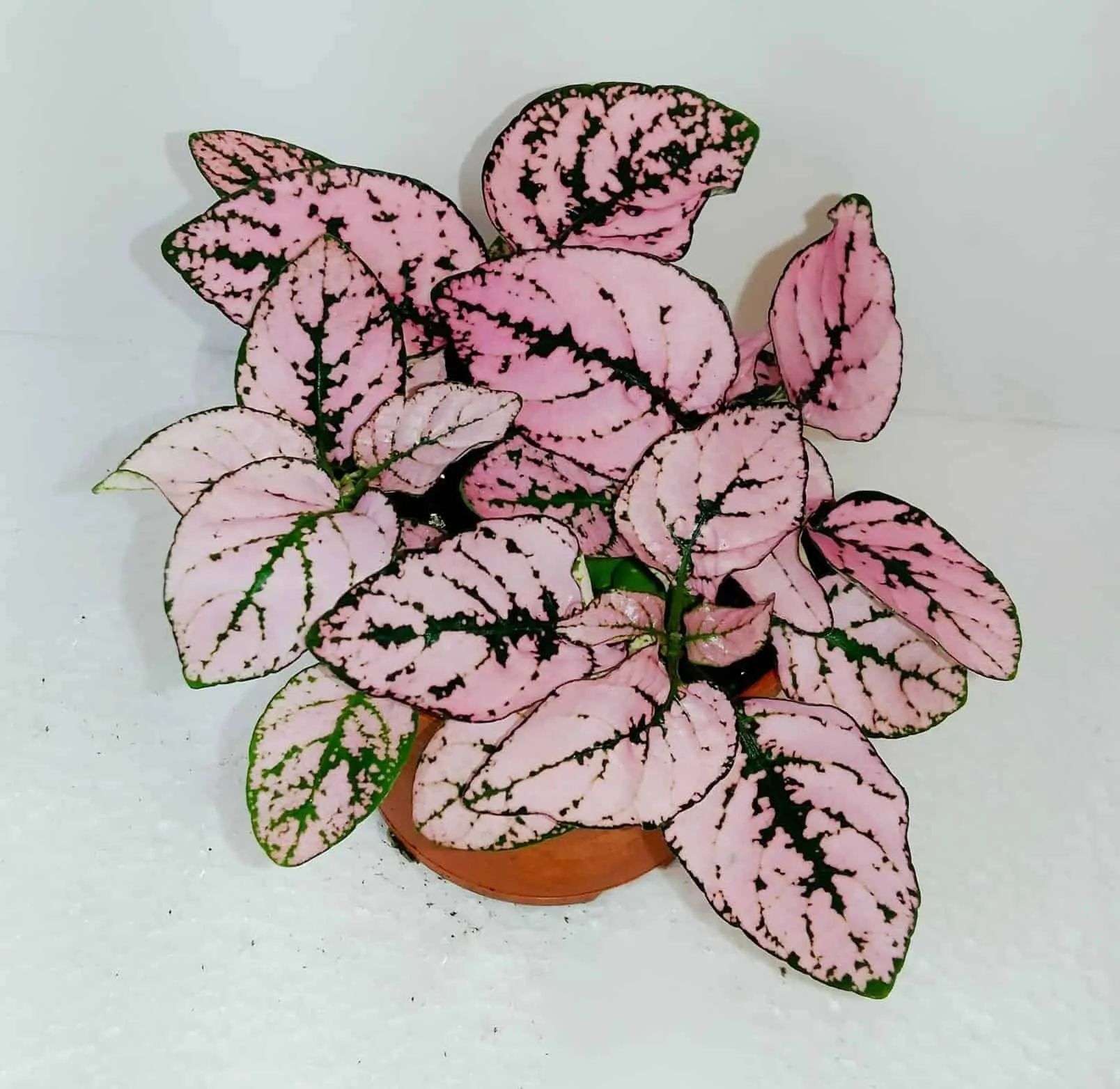
Write comments
Comments